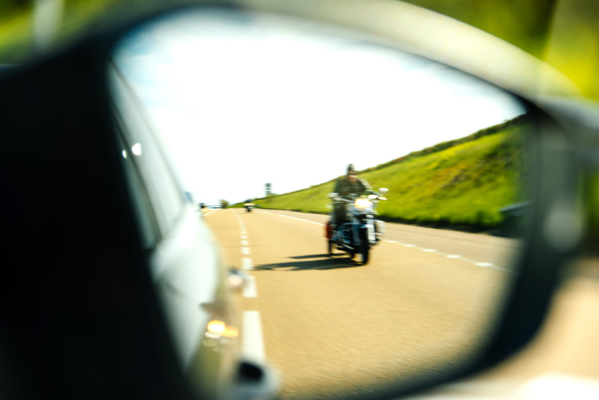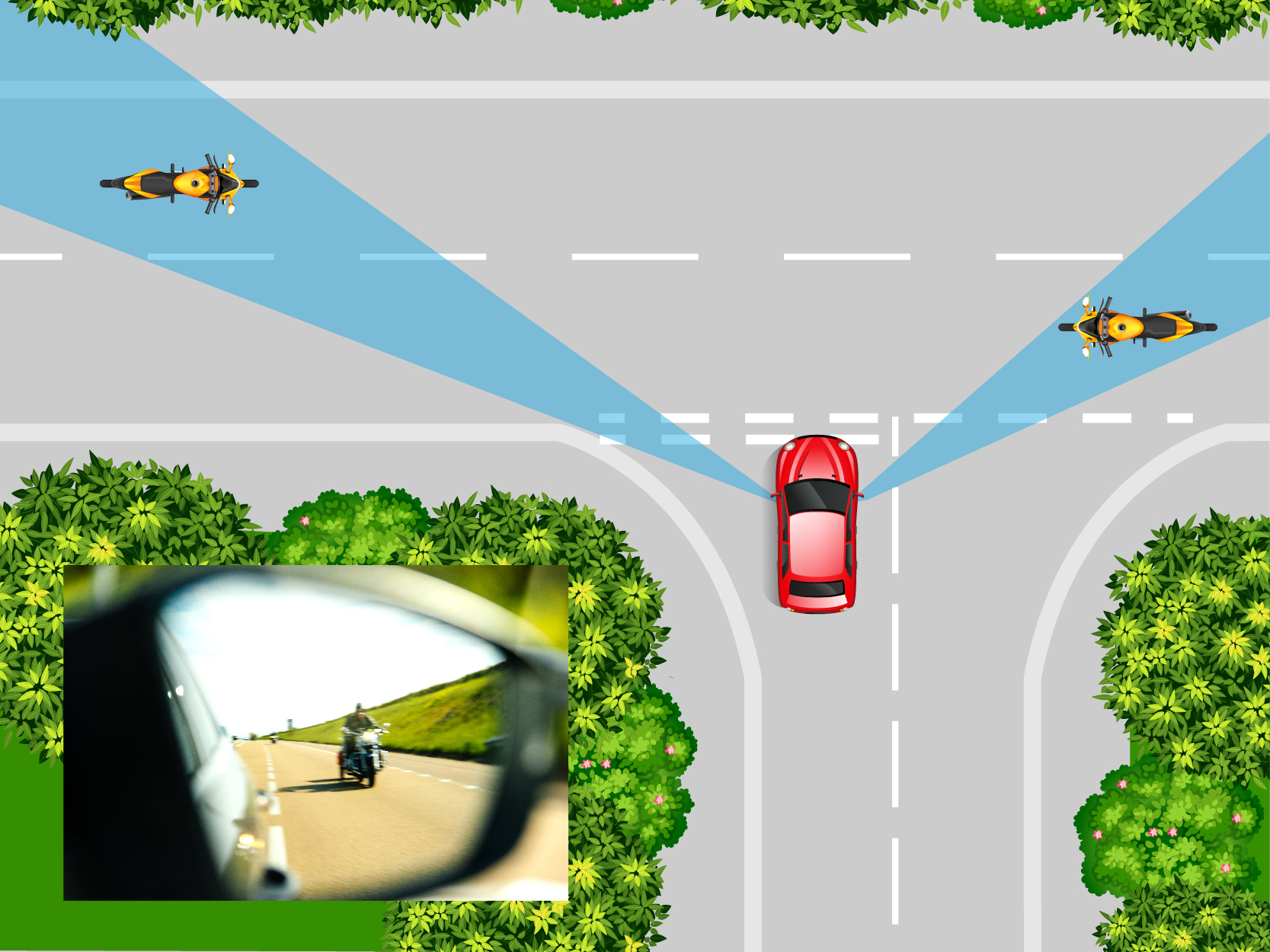4th July 2019
Driving Safely Around Motorcyclists

Accidents and injuries involving motorbikes are a serious issue on British roads. According to Think!, the government’s road safety campaign, motorcyclists make up just 1% of total road traffic, but account for 19% of all road user deaths.
Think! also say that, per mile ridden, motorcyclists are around 38 times more likely to be killed in a road accident than people who are travelling in a car.
Motorcycle riders are classed as vulnerable road users due to the lack of protection we are so used to in our cars. A certain percentage of motorcycle accidents are, of course, the fault of the rider but as drivers we can help to reduce the fatality statistics by being more aware of motorcyclists’ vulnerability, driving safer and being less impatient.
JUNCTIONS
Junctions are particularly dangerous for motorcyclists with 30 motorcyclists killed or injured every day and around two thirds of all motorcycle related accidents happen at or near to junctions. This is why it’s vital for car drivers to make sure that they stop and pay extra attention around these vulnerable areas.
The main driver fault which is the cause of motorcycle related accidents at junctions is a lack of effective observation, which can be divided into two possible reasons.
- The first being a lack of time spent observing. Quite often drivers approach junctions far too quickly, take a brief look up and down the road and pull out if it appears to be clear. Drivers need to anticipate and plan for any given situation when approaching a junction and this cannot be done if the junction is approached too quickly.Approaching a junction slowly can sometimes save time as it can often give you time to effectively observe the road situation without the need to physically stop. In general drivers should look at least twice in each direction before moving out. Some ‘closed’ or blind junctions require further observation.
- Another reason can be associated with the A-pillar blind spot which can easily conceal hazards. The A-pillar is located between the windscreen and the door (see image) and varies in width depending on the vehicle. The wider the pillar, the larger the blind spot. The blue shaded areas in the image illustrate the blind spots on the road that the driver is unable to see.A motorcyclist can easily be concealed in the blind spot but by taking a little more time observing at junctions before pulling out, drivers can spot hazards that otherwise would have been missed or obscured by blind spots.

CHANGING DIRECTION
Changing direction can include left and right turns and changing lanes, either to get in the correct lane at a junction or roundabout or overtake a slower vehicle for example.
Other blind spots which can conceal potential hazards are areas in a vehicle’s mirrors that cannot be observed and so require physically looking round to check. These blind spots can easily conceal smaller vehicles such as a motorcycle.
After checking their mirrors, drivers should always check the blind spot area corresponding to the direction they intend moving in.
Also be aware that parked cars, or larger cars and lorries, could be blocking your view of a motorcyclist.
FOLLOWING DISTANCES
Riding a motorcycle comes with a whole set of hazards that many car drivers need not think about. A motorcyclist will often need to change their road position and speed based on the road surface. For example they will need to avoid loose debris on the road, oil spillages and potholes. On wet roads, manhole covers and painted lines and letters provide motorcyclists with a slippery hazard.
Remember that on wet roads, a motorcycle will take longer to slow down and will need to take corners slower than usual. Make sure that you keep a safe distance between yourself and any motorcyclists. Driving too close can intimidate less experienced motorcyclists and thus increase the likelihood of an accident.
The best advice for drivers is to always follow the two second rule technique (four seconds in the wet) and if following a motorcycle, allow for a little extra room if possible.
Whilst observing the traffic conditions around us, we tend to look for other cars, vans and larger vehicles and often forget about motorcycles. Remember that motorcycles are moving often at the same speed as cars, but are much smaller and therefore much harder to see. This is particularly significant during rainy, foggy and low-light conditions. At night, the lights from a motorcycle being so close together can easily appear to blend in with other traffic making the bike almost invisible.
Drivers have a responsibility to make sure that all road users stay as safe as possible, including motorcyclists.
Drivers also need to keep thinking about motorcyclists once parked. Make sure you check for them before you open your car doors and make sure that your passengers do the same. When you drive off, look specifically for motorbikes as they can accelerate faster than cars.
Sentencing and convictions
According to The Crown Prosecution Service, a driver involved in a collision in which a motorcyclist dies can be charged with causing death by driving. Those convicted of this crime can be sentenced to a maximum penalty of five years imprisonment, six months pre-imprisonment, mandatory endorsement between three and eleven points, minimum mandatory disqualification of twelve months, and a discretionary re-test.
If, however a person is charged with causing death by careless driving or with causing death by dangerous driving, they will incur all of the above sanctions but could also face up to 14 years in prison.
Sitting in our cars, focusing on the car in front and the car behind, drivers can sometimes not pay enough attention to other more vulnerable road users. However, one small mistake can not only change the lives of a driver and the motorcyclist, but all the people related to those involved. That’s why it is so important to drive carefully and to always pay attention on the road.
For further guidance, read our factsheet which provides 10 top tips on how, as a driver, you can help make the roads safer for motorcyclists.
Remember – one mistake could end in fatality; particularly with vulnerable road users such as motorcyclists.